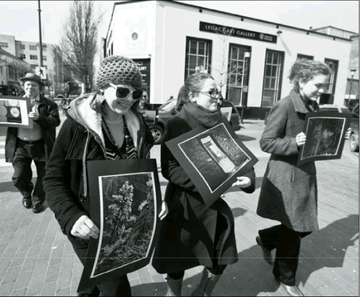
The ACCESS Art virtual exhibit celebrates the installation of more than forty works of art from the University of Victoria’s Art Collection at the ACCESS Health Centre in Victoria British Columbia. The project began in 2008 with a request from the Cool-Aid Health Services team for works of art from the university’s art collection, to be installed at their new ACCESS health care facility in Victoria, British Columbia. Cool-Aid’s request for an art installation has opened up the opportunity to test and develop the practice of participatory curation beyond a classroom community and outside of the walls of a gallery space. It harmonizes well with Michael Williams’ legacy of good works in Victoria’s downtown community. The project serves the University of Victoria Art Collections as well, alleviating some pressure on scarce storage space. Over the past three years, The ACCESS Art project has developed as a major collaborative initiative that includes staff from the University of Victoria Art Collections, the Cool Aid Health Services Clinic, and more than twenty University of Victoria students.
This web exhibit will take you through pages focused on: the planning process, the art installations in the medical and dental clinics, before and after photographs, research outcomes, and acknowledgements.

Art Procession performatively rendered the routine movement of student curators and works of art between our classroom at the Legacy Gallery and the ACCESS Health building on Johnson Street between 2010 and 2012. During this two-year period, I worked with about twenty students and both gallery and health clinic staff to design an installation of more than forty works of art for the Cool Aid Community Health Services Clinics at their new home at the ACCESS Health building on Johnson Street. On March 21, 2012 we retraced our usual path between the two sites, carrying reproductions of the art installed in the clinics from the Legacy Gallery to the ACCESS Health building. Art Procession exhibition was designed to activate the space between our two places of work, vivifying what James Meyer has referred to as a “functional site.” By setting the art in motion, we also reconfigured our relationship to the images and to the streets of Victoria.